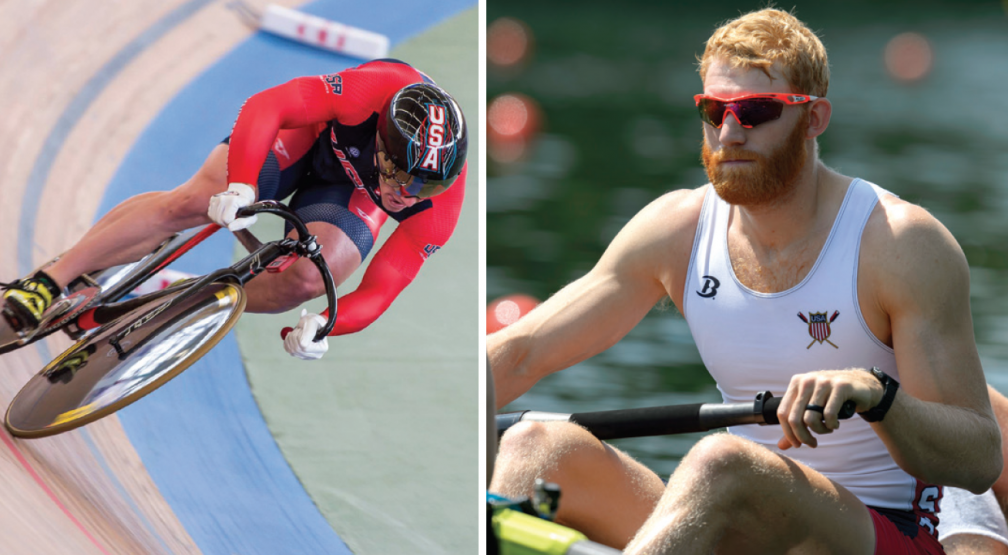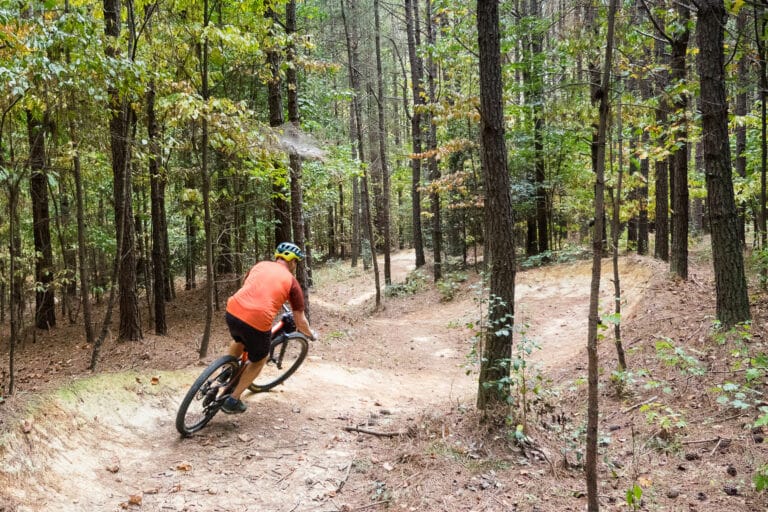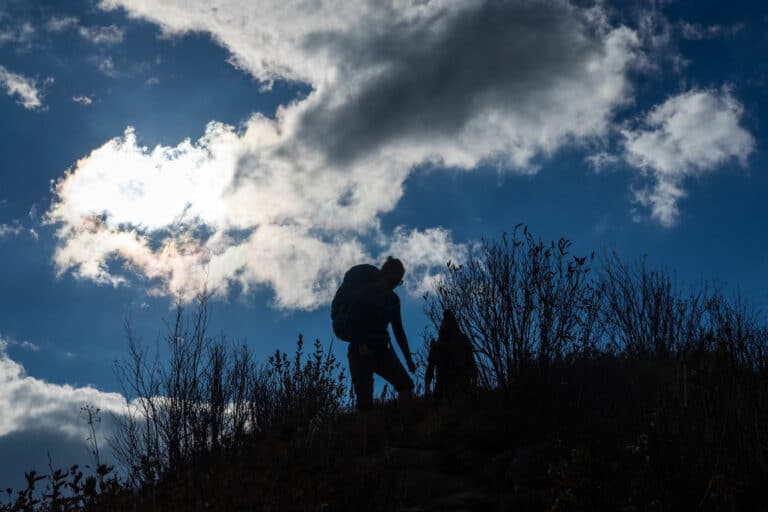Athletes who reach the Olympic Games are heralded as being the best in their disciplines, but that journey isn’t always paved with gold. A fear of water initially impeded whitewater slalom kayaker Michal Smolen. Open-water swimmer Sean Ryan struggled at first to cover 25 yards in a pool. Track cyclist Matt Baranoski delayed his college studies to chase the Olympic dream. Rower Matt Miller overcame physical and mental challenges as he transitioned to national team training. Whitewater slalom kayaker Ashley Nee shook off two failed Olympic attempts, and triathlete Katie Zaferes overcame her share of challenges to reach the Games. These six first-time Olympians and regional natives will join more than 500 other U.S. athletes next month in Brazil, all hoping years spent perfecting their craft will culminate in a podium finish.
Matt Baranoski, Track Cyclist
Perkasie, Pennsylvania
Matt Baranoski’s track cycling saga began at age six, when his parents enrolled him in classes at Valley Preferred Cycling Center in Breinigsville, Pa. He soon began racing, and said recently, it’s “escalated into the crazy life that it is now.” Baranoski, who rides for Custom Velo, will compete in the keirin. The sport challenges six cyclists to circuit a track for eight laps. The field follows an electric pace bike for the first five-and-a-half laps, but when the pacer exits, it’s an all-out sprint to the finish.
The race is short—about two kilometers—and a completely “different animal” from road or mountain bike events, said Baranoski. Riding a bike that lacks brakes, the 22-year-old sprinter can coast at 50 miles per hour around a track with 45-degree curves. Track cycling “is one of the weird things where you’re doing something that is relatively out of control, but you’re completely in control doing it,” he said.
At age 17, Baranoski became the youngest U.S. elite track cycling national champion, and Union Cycliste Internationale currently ranks him 19th in the world for the keirin. He also holds more than 30 USA Cycling national championships. Attaining these feats hasn’t been without sacrifice. Baranoski took a two-year leave from college to chase his Olympic dream. He’s set to graduate this year from Penn State with an electrical engineering degree. “The decision to leave school…to chase something that might or might not work out was huge,” he said. That decision proved worthwhile when, after a two-year qualifying period, he secured his berth to Rio. Baranoski, who writes the word “Believe” on his handlebars, never looked back. “It’s been a long two years,” he said, but that “whirlwind” journey seems well worth the toil. “It’s really cool to have finally made it and be an Olympian.”
Matt Miller, Rower
Springfield, Virginia
Rowing demands diversity. This mix of strategy, coordination, and physical exertion has kept Matt Miller hooked since high school.
The Springfield, Va. native is making his Olympic debut as part of the United States’ four-man rowing team. Miller, now 27, began rowing his freshman year of high school at the suggestion of a neighbor. He competed through high school and later at the University of Virginia. Following college, he rowed for two years with the Potomac Boat Club in Washington D.C. Selected in January 2014 to train with the U.S. national team, Miller left the club, quit his full-time job and moved to California for winter training.
He is now at the US Rowing Training Center in Princeton, N.J. Most of Miller’s career has been spent in the eight-man boat—he was part of the national team that won gold at the 2014 World Rowing Cup II. He also won gold at this year’s World Rowing Cup I as part of the four-man team. “I love the competitive aspect of it,” he said. To train for a 2,000 meter race, you need a lot of aerobic capacities,” including stamina, “strength, power, and sprinting ability.”
Miller’s journey toward Rio has demanded perseverance. Upon joining the national team, he switched the rowing technique he was accustomed to and more than doubled the distance he rowed daily. Miller told himself it would get easier, that his body would adapt. “At the time it was discouraging because I wasn’t doing well, I was worn down and beaten at practice day-in and day-out and finishing last. That was part of the difficulty of it.” Miller knew his aerobic capacity and physiology were why he had been recruited, so he kept telling himself that he’d eventually conquer the steep learning curve. That drive has paid off as Miller makes his Olympic debut.
Ashley Nee, Whitewater Slalom Kayaker
Bethesda, Maryland
Third time’s a charm for Ashley Nee. Rio serves as her third Olympics attempt, a journey that began eight years ago.
Nee, now 27, qualified for a women’s kayak spot at the 2008 Beijing Olympics, but a shoulder injury placed her out of contention at the team trials. Four years later, Nee scored enough points to secure a 2012 team slot but lost that berth on a tiebreaker that instead sent Caroline Queen to London. “This is my third attempt at becoming an Olympian and I still can’t really believe that I have accomplished it,” said Nee. “It was really hard getting hurt right before the Olympic Trials in 2008 and then coming back only to lose in a tie for the 2012 Games.” Nee’s optimism outweighs past frustration, though. “I believe everything happens for a reason. Representing the U.S. in the Olympic Games is a lofty goal, and having to try three times makes me respect the athletes that came before me even more.”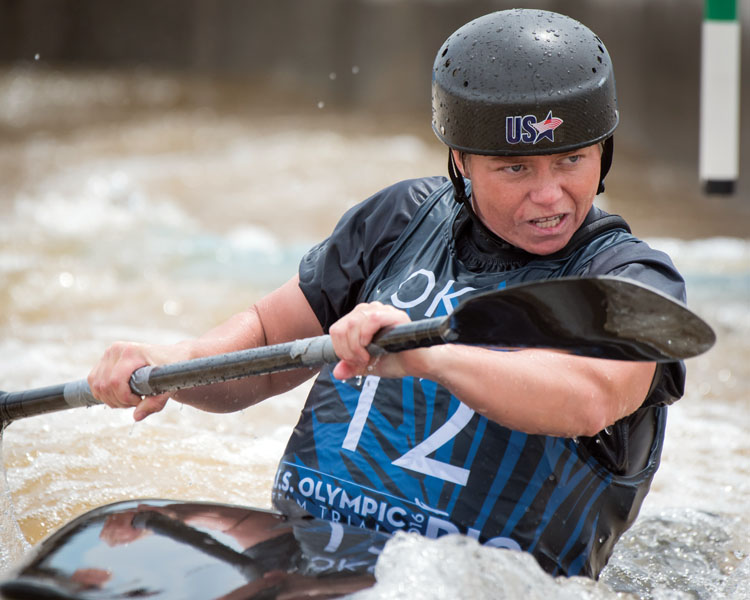 Following her shoulder injury, Nee took a paddling hiatus. A recent high school graduate, she instead turned her focus to college and career options. “I had been paddling since I was ten and I wanted to see what it was like to have my life revolve around something other than paddling, so I moved to Honolulu.” A year and a half later—during which time Nee picked up longboarding and dabbled in street art—her shoulder had almost healed, and she refocused on paddling.
Following her shoulder injury, Nee took a paddling hiatus. A recent high school graduate, she instead turned her focus to college and career options. “I had been paddling since I was ten and I wanted to see what it was like to have my life revolve around something other than paddling, so I moved to Honolulu.” A year and a half later—during which time Nee picked up longboarding and dabbled in street art—her shoulder had almost healed, and she refocused on paddling.
Nee’s most recent Olympic pursuit has also been challenging. At this year’s two team trial legs in North Carolina and Oklahoma, she finished first and second, respectively. Tied with fellow athlete Dana Mann, Nee received the Olympic spot based on her performance at last year’s Pan American Games in Toronto. “The women’s kayak final (at Pan Am) was an epic race,” she recalled. The top three women—Nee took bronze, Canada took gold, and Brazil took silver—were separated by just .03 seconds. “It was an awesome race to be a part of, but it was an Olympic qualifier and it wasn’t clear if we would get an Olympic berth for the U.S.”
Nee began kayaking at age ten during summer camp at Valley Mill Camp in Seneca, Md. Seventeen years later, she now works as a kayaking instructor for Liquid Adventures in Maryland and loves the reward of watching someone “get better and better.” Slalom racing is not easy, but Nee remains confident “anyone can do it” and advises young athletes to “dream big.” Also sound advice? Her father’s words to “be good, be safe, and have fun.”
There are no practice runs in a race, and Nee said she responds by treating each course as a puzzle. “Seeing how fast I can solve that course is my inspiration.” The next puzzle Nee likely wants to solve? How to bring home gold this summer.
Sean Ryan, Open-Water Swimmer
Chattanooga, Tennessee
When Sean Ryan joined his first swim team, he struggled at covering 25 yards. Now the 23-year-old will compete in marathon swimming at the Games, a competition that challenges athletes to swim a six-mile open water course.
A fourth place finish at last year’s FINA World Championships earned Ryan his Olympic berth. Finishing in slightly over 1 hour, 50 minutes, Ryan said he was pinching himself after the race. “There were seven people right behind me, and I wouldn’t let myself look backwards. To finish and see that I had finished fourth was something special.”
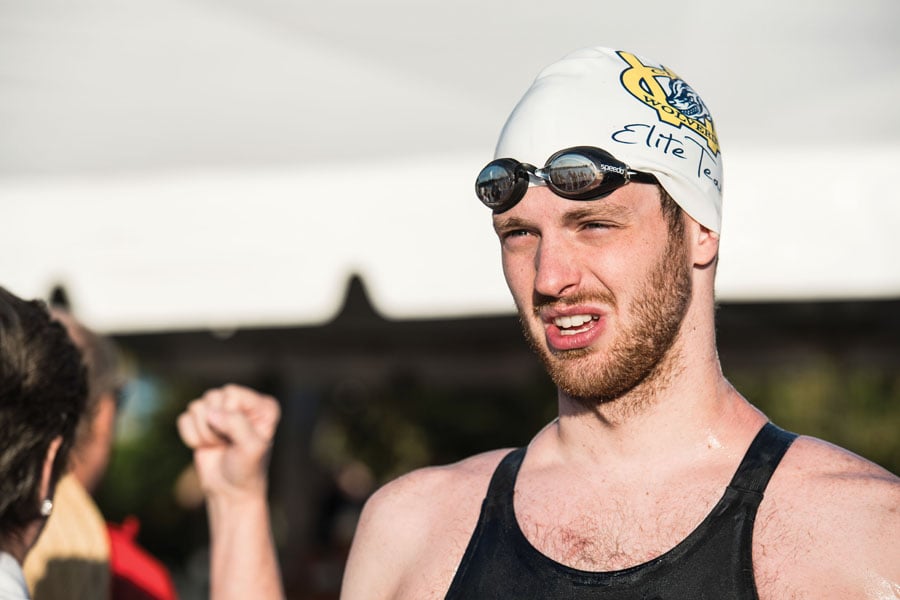
Ryan rebounded after not qualifying for the 2012 U.S. Olympic Team. He needed a top ten finish at the 2011 FINA World Championships for an automatic berth but finished 25th. His attempts a year later to qualify for the pool team also fell short. He didn’t give up. “I came back after that and really tried to take a new approach and really enjoy the process and enjoy training and other things in my life outside swimming. That has overall paid off.”
Ryan, who began swimming competitively at age five, recalled how his mother contemplated whether to register him for swim lessons or the swim team. When she asked if he could swim across a 25-yard pool, Ryan responded, “definitely.” That response solidified the team option, but Ryan soon discovered swimming that distance was harder than it appeared. Still, he stuck with it. That dedication led to his first Olympic Team Trials in 2008 for the 1,500-meter freestyle. He’s also made several national team rosters in open water and the 1,500 and earned multiple medals in both national and international competitions. Ryan, a former member of the University of Michigan men’s swimming and diving program, recently finished his master’s degree in mechanical engineering. He lives and trains in Michigan but said his favorite open-water swimming spot remains the Tennessee River near downtown Chattanooga. “It’s one of the most scenic places to swim. You’re looking down river and into the mountains and tree lines.”
Michal Smolen, Whitewater Slalom Kayaker
Gastonia, North Carolina
Michal Smolen sat frozen in a kayak in the middle of the Nantahala River near the Nantahala Outdoor Center. Oversized kayaking gear engulfed his slight, eight-year-old frame. A desire to follow in his father’s footsteps had brought him to this moment, his first kayaking attempt during a summer visit to the United States.
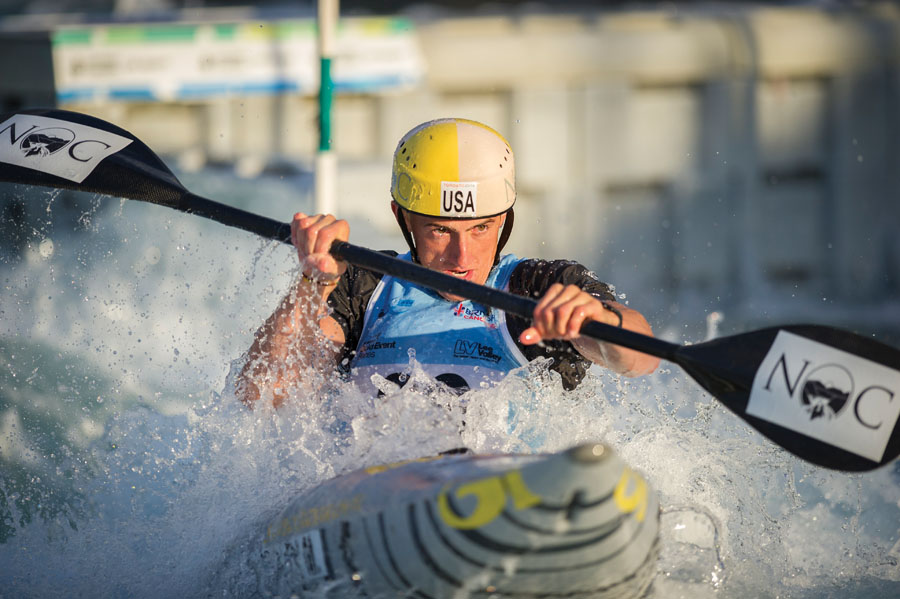
Smolen emigrated from Poland at age nine. His father—a former member of the Polish National Team and whitewater slalom alternate for Poland at the 1992 and 1996 Olympic Games—accepted a coaching job in 2000 with the Nantahala Racing Club. He now serves as USA Canoe/Kayak’s slalom national development and coaching manager and is his son’s coach.
Michal Smolen, 22, initially hesitated to embrace his father’s sport. Being alone in the water overwhelmed him, and Smolen vowed against attempting the sport again. “I didn’t know how to swim when I went kayaking the first time. I was scared of flipping over and not being able to come back up and not being able to swim in the river.” Ironically, he chose competitive swimming instead, a sport he continued until, at age 13, he began eyeing whitewater kayaking.
This wasn’t the only obstacle Smolen overcame to attain his Olympic dream. About the time he returned to kayaking, Smolen was diagnosed with epilepsy. “I was afraid when it happened that I wouldn’t be able to paddle.” He was eventually cleared to keep paddling but suffered yet another setback before the 2012 Games. Smolen won the men’s kayak single U.S. national team trials in 2011, bolstering his chances at representing the United States in London. The Polish-born athlete was not yet a U.S. citizen, though, and efforts to lobby Congress to fast-track his citizenship were unsuccessful. Smolen didn’t receive his citizenship until seven months following the Games. “I was just so upset and now I don’t see it that way anymore. I’ve had a lot of experience in the last four years and really prepared . . . and I think that going to Rio I can do well.”
As he readies for the Games, Smolen offered advice for athletes beginning to climb the ranks. “Make sure you definitely have your goals and are competitive, but at the same time don’t forget to have fun. You must always remind yourself of why you’re doing it.”
Triathlete
Katie Zaferes, Triathlete
Hampstead, Maryland
Katie Zaferes lettered in five high school sports and holds records at Syracuse University in both the outdoor 3,000-meter steeplechase and indoor 5,000 meters. It wasn’t until she began competing in triathlons that Zaferes, 27, ever thought she could be “that caliber of athlete” who could reach the Olympics. A week following her selection as the U.S. women’s final and third triathlete, Zaferes’ enthusiasm was still evident. “I’m so excited, happily overwhelmed, proud and relieved,” she wrote via email. “It’s been a goal that has been sitting there for two years now . . . it’s crazy to think come August 20th I’ll get to call myself an Olympian!!” Zaferes, who now lives in California, joins Gwen Jorgensen and Sarah True, both of whom solidified their Olympic berths last August. Zaferes locked down her team spot following a sixth place finish in May at a world triathlon event in Japan.
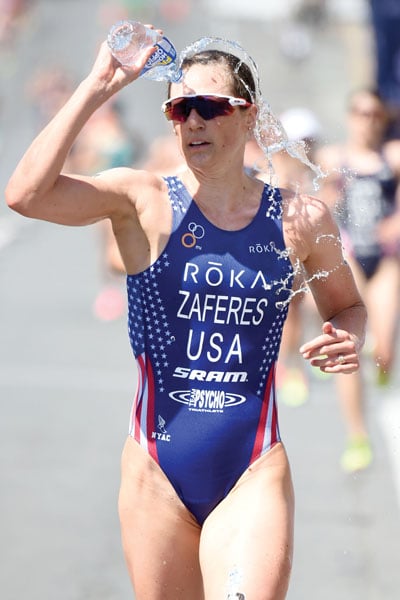
Zaferes was tapped by USA Triathlon’s Collegiate Recruitment Program in 2012, though her introduction to the sport came about five years earlier when she ran a triathlon alongside her father, Bill. Zaferes, then a high school senior, didn’t foresee a future in triathlon at that time, especially given her recent commitment to running at Syracuse. Now, Zaferes can’t imagine focusing all her energy on just one sport. “There are so many things I love about triathlon,” she said. Training for three varied disciplines keeps it “exciting and fun,” and she loves how the sport has introduced her to new places and people.
Being a part of an All-American podium alongside True and Jorgensen twice last year has been among Zaferes’ most memorable moments. The toughest moments have been mental, pushing through flashes of “doubt” or “frustration” and shaking off pressures associated with competing at the elite level. “The great part is that none of those moments have lasted too long, and I have an awesome support network to make those cloudy days better.” She advises future Olympic hopefuls to enjoy the journey and push through those trying times. “There will be days where it’s hard and it seems like you’re never going to perfect a particular skill, but enjoy the process and keep working on it over time,” she said. “Always give yourself credit for those small victories and take the time to be proud of yourself.”
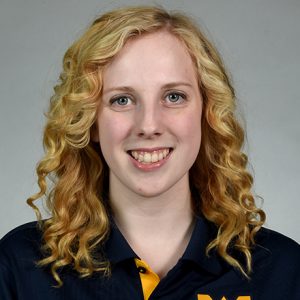
Ginny Thrasher, 10M Air Rifle/ Three-Position Rifle
Springfield, Va.
A product of West Springfield High School in Virginia, Thrasher shot for her high school rifle team, but her love of shooting first came after hunting with her grandfather. At West Virginia University, Thrasher has quickly taken her skills to the next level.
As a freshman, she earned five medals at the 2015 USA Shooting National Championships, and she led all rifle competitors in the country with the top air rifle score of 599/600 that she shot on two separate occasions. She became the first freshman rifle shooter ever to win both individual titles in air and smallbore while leading WVU to their fourth-straight, and 18th overall, NCAA team title.
Success didn’t end there for the 19-year-old, however. She went to Olympic Team Trials three weeks later and pulled out a decisive victory in the Three-Position event over a seasoned and talented field. She earned a nine-point win having never competed in the event internationally. From NCAA Champion to Olympian, the teenager from WVU has her sights on a medal in Rio.
Joe Morris, Sailor
Annapolis, Md.
Elite sailor Joe Morris qualified for the Olympic team as part of the two-person crew for the 49er—a high-performance dinghy. It’s a dangerous boat with little margin for error; if you make a mistake, you flip.
Morris was working for a technology company in Switzerland when his former Yale Sailing teammate Thomas Barrows called him looking for a partner on the 49er. They spent a month sailing in the Virgin Islands and decided to commit themselves to pursuing an Olympic berth.
Though they started as underdogs, they quickly ascended the ranks and placed well in national competitions. US Regatta announced this spring that Barrows and Morris would represent the U.S. in the 49er competition in Rio.
